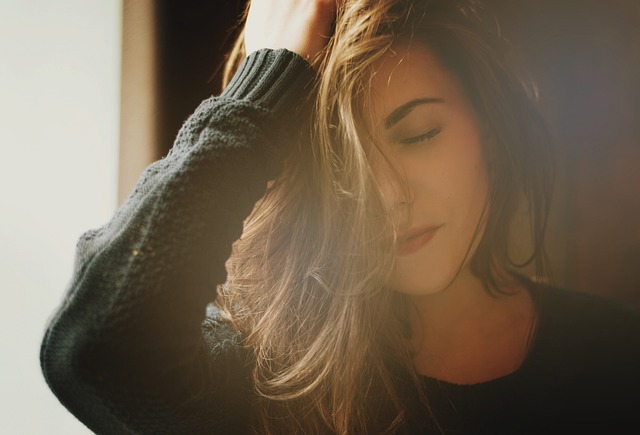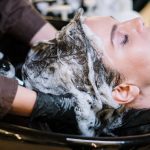
Women Over 40: Does Greasy Hair Cause Hair Loss?
In your 40’s, there are few things less dreadful than experiencing hair loss. It’s easy to jump to conclusions about the root causes of hair loss. Is it your diet? Is it poor hair-care habits? Or is it an oily scalp?
An oily scalp is not a direct cause of hair loss, but an excessive sebum production can clog pores and contribute to hair fall.
Continue reading to learn more about the correlation between greasy hair and hair loss and how you can balance an oily scalp. You should also check this resource to stop hair loss by PRP therapy.
Table of Content
What is Greasy Hair?
The sebaceous glands on your scalp produce an oily substance, called sebum.
Greasy hair is a result of an excess of sebum on the scalp.
Sebum is a natural oil that is responsible for moisturizing and protecting the scalp and hair; however, too much of it will make strands appear greasy and weighed-down.
A few reasons you may be experiencing greasy hair include hormonal fluctuations, stress, skin conditions, poor hair-care habits and genetics.
Skin conditions like psoriasis and seborrheic dermatitis increase skin cell turnover, which increases sebum production. If you struggle with greasy hair even after washing or an itchy, flaky scalp, this may be a sign you have an oily scalp.
Greasy Hair and Hair Loss
Greasy hair can contribute to hair loss; however, it is not the sole culprit of hair loss.
Overactive sebaceous glands will not cause your hair to fall out. It’s the way that sebum effects your hair-growth cycle that may lead to hair loss.
An excess amount of sebum on the scalp can trap dirt, dead skin cells and product buildup and clog pores. If your hair follicles are clogged, hair follicles won’t come to the scalp’s surface.
The excessive oil clogging your follicles will cause micro-inflammation, which disrupts a healthy hair-growth cycle and contributes to hair fall.
The hormone, dihydrotestosterone (DHT) has been directly related to hair loss.
High levels of DHT trigger receptors to shrink and destroy hair follicles and cause an oily scalp, disrupting a healthy hair-growth cycle.
Once a hair follicle dies, it can no longer grow new hair. This will eventually cause the hair to lose density and fall. DHT fluctuations may occur because of menopause, medications, a poor diet and age.
How to Fix Greasy Hair
Skip the Daily Shampoo
Your first reaction after seeing greasy roots in the mirror is probably to reach for the shampoo.
This may seem logical, but it could actually be making your hair greasier.
Over washing your hair can remove too much natural oil from your scalp, which stimulates your sebaceous glands to produce even more oil.
To avoiding kicking your sebum production into overdrive, try not to wash your hair every day.
Start by skipping the shampoo once or twice a week, until you’re able to go two or three days between shampoos. Be patient, it may take a few months to train your hair, but your scalp will thank you!
Use a Clarifying Shampoo
A clarifying shampoo may be the quick fix greasy, lifeless strands are looking for.
Clarifying shampoos are formulated to deep clean your mane by removing oil, dirt and product buildup from your scalp.
Consider looking for clarifying shampoos with natural cleansing agents like tea tree oil, apple cider vinegar and activated charcoal.
Due to its intense cleansing ability, it is only necessary to use a clarifying shampoo a few times a month. They purge your scalp of gunk, but can also strip away your natural oils.
Condition Wisely
If you have greasy hair, don’t skip the conditioner, just use it correctly! Conditioner provides your hair with the hydration and protection it doesn’t get from other hair products.
When you apply your conditioner, focus the product on the ends of your hair.
Avoid applying conditioner to your roots to keep your hair from looking and feeling heavy and oily. Finally, make sure to rinse your conditioner thoroughly. Sometimes, grease is mistaken for leftover conditioner.
Prioritize a Healthy Diet
Believe it or not, a poor diet can trigger the production of too much sebum, making hair greasier than normal.
Fried food overloads your body with oil, which over-stimulates the oil glands. Additionally, try avoiding a diet high in salt. Too much salt tends to dehydrate you, which makes your body produce more oil to compensate for a lack of water.
Dairy is another triggering food for those with greasy scalps. Dairy is digested by our bodies as oils and fats, which increases sebum production.
To prevent greasy hair and an oily scalp, consume a low-sugar diet rich in B vitamins. B vitamins are known to balance your scalp’s sebum production, which helps in managing greasy hair.
They also help produce red blood cells, which carry oxygen to the hair follicles to generate new hair.
Implement vitamin B into your diet by consuming seafood, poultry and leafy greens. Additionally, zinc supplementation may help control sebum production. Zinc supports hair tissue growth and manages the function of oil glands. Foods like oysters, whole grains and nuts are high in zinc.
Conclusion
Getting to the root cause of hair loss isn’t always easy. Greasy tresses are a tell-tale sign of excess sebum production, which can clog pores and lead to hair fall. For this reason, it is important to manage an oily scalp, before experiencing more extreme consequences. With a few tweaks to your hair-care practices and diet, you will be well on your way to fresh, weightless locks.


